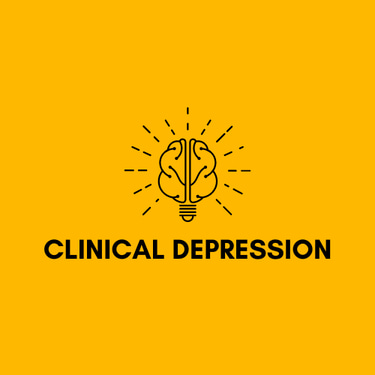For Questions: Text (833)233-0869
Virtual Mental Health Support: A Comprehensive Guide to Managing Anxiety and Depression


In today’s fast-paced world, anxiety and depression have become increasingly common. The pressures of modern life, coupled with the ongoing challenges of the digital age, have made it more important than ever to have access to mental health support. One of the most effective and accessible forms of this support is virtual mental health services. In this article, we'll explore how virtual mental health support can help manage anxiety and depression, its benefits, and how you can access these services to improve your well-being.
Understanding Anxiety and Depression
What Is Anxiety?
Anxiety is a natural response to stress and can be beneficial in some situations. It alerts us to danger and helps us stay focused and motivated. However, when anxiety becomes overwhelming or chronic, it can interfere with daily activities and lead to a host of physical and emotional issues.
Common Symptoms of Anxiety:
Persistent worry or fear
Restlessness or feeling on edge
Fatigue
Difficulty concentrating
Muscle tension
Sleep disturbances
What Is Depression?
Depression is a serious mood disorder that affects how you feel, think, and handle daily activities. Unlike occasional sadness, depression can last for weeks, months, or even years and requires proper treatment and management.
Common Symptoms of Depression:
Persistent sadness or empty mood
Loss of interest in activities once enjoyed
Changes in appetite or weight
Sleep disturbances (insomnia or oversleeping)
Loss of energy or increased fatigue
Feelings of worthlessness or guilt
Difficulty concentrating
Thoughts of death or suicide
The Rise of Virtual Mental Health Support
The digital revolution has transformed nearly every aspect of our lives, including how we access healthcare. Virtual mental health support has emerged as a powerful tool in managing anxiety and depression, offering a convenient and effective way to receive care.
What Is Virtual Mental Health Support?
Virtual mental health support refers to the provision of mental health services through digital platforms. This can include video conferencing, phone calls, text messaging, and online chat services. These platforms connect patients with licensed mental health professionals who provide therapy, counseling, and other forms of support remotely.
Why Is Virtual Mental Health Support Important?
The importance of virtual mental health support cannot be overstated. It breaks down barriers that might prevent individuals from seeking help, such as geographical location, time constraints, or stigma. Additionally, it offers a level of convenience that traditional in-person therapy may not, making it easier for people to fit mental health care into their busy lives.
Benefits of Virtual Mental Health Support for Anxiety and Depression
1. Accessibility and Convenience
One of the most significant benefits of virtual mental health support is its accessibility. Whether you live in a remote area with limited access to mental health services or have a busy schedule that makes it difficult to attend in-person sessions, virtual support provides a solution. You can access care from the comfort of your own home, at a time that suits you.
2. Anonymity and Privacy
For many people, the stigma associated with mental health issues can be a significant barrier to seeking help. Virtual mental health support offers a level of anonymity that can make it easier for individuals to reach out. You can receive care without the fear of being judged or recognized by others, which can be particularly beneficial for those dealing with social anxiety or depression.
3. Continuity of Care
Life can be unpredictable, and circumstances can change quickly. Virtual mental health support ensures continuity of care, even if you move to a new location or your schedule changes. This is crucial for managing chronic conditions like anxiety and depression, where ongoing support is essential for recovery and well-being.
4. Variety of Treatment Options
Virtual platforms offer a wide range of treatment options, from cognitive-behavioral therapy (CBT) and talk therapy to medication management and mindfulness practices. This variety allows you to find the approach that works best for you and tailor your treatment plan to meet your specific needs.
5. Cost-Effectiveness
Traditional in-person therapy can be expensive, and the cost can be a significant barrier to accessing care. Virtual mental health support is often more affordable, with many platforms offering flexible payment plans, sliding scale fees, or even free services. Additionally, it eliminates costs associated with travel and time off work, making it a more cost-effective option for many people.
How Virtual Mental Health Support Works
Step 1: Finding the Right Platform
The first step in accessing virtual mental health support is finding a platform that meets your needs. There are numerous options available, ranging from large, well-known providers to smaller, specialized platforms. When choosing a platform, consider factors such as the types of services offered, the qualifications of the professionals, pricing, and user reviews.
Step 2: Initial Assessment
Once you've chosen a platform, you'll typically go through an initial assessment. This may involve filling out questionnaires or having an introductory session with a therapist or counselor. The assessment helps determine the best course of treatment and matches you with a professional who can meet your needs.
Step 3: Scheduling Sessions
After the assessment, you can schedule sessions with your therapist or counselor. Most platforms offer flexible scheduling, allowing you to choose times that work best for you. Sessions can be conducted via video call, phone, or messaging, depending on your preference and the platform's capabilities.
Step 4: Ongoing Support
Ongoing support is a critical component of managing anxiety and depression. Your therapist or counselor will work with you to develop a treatment plan that includes regular sessions, homework assignments, and other resources to help you manage your symptoms. Many platforms also offer tools like mood tracking, journaling, and guided meditations to complement your therapy.
Step 5: Progress Monitoring and Adjustment
As you progress in your treatment, your therapist will monitor your symptoms and make adjustments to your treatment plan as needed. This may involve changing the frequency of sessions, introducing new therapeutic techniques, or adjusting any medications you may be taking.
Success Stories: How Virtual Mental Health Support Has Helped
Many individuals have found relief from anxiety and depression through virtual mental health support. Here are a few examples of how this approach has made a difference:
Case Study 1: Overcoming Social Anxiety
Sarah, a 28-year-old marketing professional, struggled with social anxiety that made it difficult for her to network and advance in her career. Traditional therapy was challenging due to her demanding work schedule. Virtual mental health support allowed her to connect with a therapist during her lunch breaks, helping her develop coping strategies that improved her confidence and professional relationships.Case Study 2: Managing Depression
John, a 45-year-old teacher, experienced severe depression following a personal loss. The idea of attending in-person therapy was overwhelming, but virtual support provided a lifeline. Through regular online sessions, John was able to work through his grief and develop a plan for rebuilding his life. The flexibility of virtual support allowed him to stay consistent with his treatment, even on his most challenging days.
How to Make the Most of Virtual Mental Health Support
1. Be Honest and Open
Virtual mental health support is most effective when you are honest and open with your therapist or counselor. Share your thoughts, feelings, and concerns, and don't hesitate to discuss any challenges you're facing. The more your therapist understands your situation, the better they can tailor your treatment plan to meet your needs.
2. Stay Consistent
Consistency is key to managing anxiety and depression. Make sure to attend your sessions regularly and follow through with any homework assignments or activities your therapist recommends. Regular practice and engagement with your treatment plan will help you achieve better results.
3. Use Additional Resources
Many virtual mental health platforms offer additional resources like educational articles, guided meditations, and self-help tools. Take advantage of these resources to complement your therapy and deepen your understanding of your condition. Engaging with these tools between sessions can help reinforce the skills you're learning and provide additional support when you need it.
4. Communicate with Your Therapist
If you're finding that a particular approach isn't working for you, or if you're experiencing new challenges, don't hesitate to communicate this with your therapist. Virtual mental health support is flexible, and your treatment plan can be adjusted to better suit your needs. Open communication ensures that your therapy remains effective and responsive to your evolving situation.
5. Prioritize Self-Care
In addition to your virtual mental health support, it's important to prioritize self-care in your daily life. This includes maintaining a healthy diet, getting regular exercise, practicing mindfulness or relaxation techniques, and ensuring you get enough sleep. Self-care is a crucial component of managing anxiety and depression and can enhance the effectiveness of your therapy.
Conclusion
Virtual mental health support is a powerful tool for managing anxiety and depression. It offers accessibility, convenience, and a wide range of treatment options that can be tailored to your specific needs. By embracing this modern approach to mental health care, you can take proactive steps towards improving your well-being and living a more balanced, fulfilling life.
If you're struggling with anxiety or depression, consider exploring virtual mental health support as a viable option. With the right platform and professional guidance, you can gain the tools and insights needed to manage your symptoms and achieve a better quality of life.
©2025
Clinical Depression
For Questions: Text
(833) 233-0869
